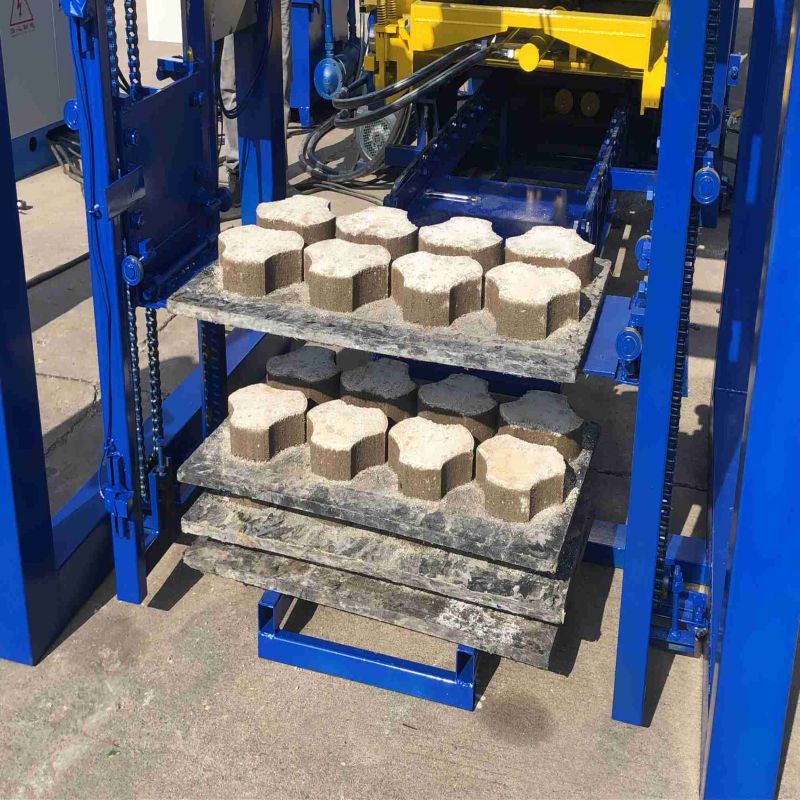
Image source:Aiwei block machine
Introduction
Brick production, a fundamental component of construction, has witnessed a significant transformation over the years with the advent of automation. Traditional brick-making methods, characterized by manual labor and rudimentary equipment, have given way to advanced automatic brick production techniques. This article delves into the advantages and innovations brought about by automation in brick production, shedding light on how it has revolutionized the industry.
1. Introduction: The Evolution of Brick Manufacturing
Begin with an introduction to the historical context of brick production, emphasizing the labor-intensive and time-consuming nature of traditional methods. Highlight the pivotal role of bricks in construction and the need for innovation.
2. The Rise of Automation in Brick Production
Discuss the emergence of automation in brick production. Explore when and why automation became a viable option for manufacturers.
3. Advantages of Automation in Brick Production
3.1. Increased Efficiency and Productivity
- Explain how automatic brick machines have significantly increased production rates and efficiency.
- Provide real-world examples of brick factories that have experienced higher output and reduced labor costs.
3.2. Consistency in Quality
- Discuss how automation ensures consistent brick quality.
- Highlight the importance of standardized bricks for construction integrity.
3.3. Reduced Labor Dependency
- Analyze how automation has reduced the reliance on manual labor in brick production.
- Address the implications of this reduction in terms of labor costs and worker safety.
3.4. Precise Control of Raw Materials
- Explain how automatic brick machines allow for precise control of raw materials.
- Discuss the impact on brick strength, durability, and uniformity.
3.5. Environmental Benefits
- Explore the environmental advantages of automation in brick production, such as reduced waste and energy efficiency.
- Discuss how eco-friendly practices are integrated into automated processes.
4. Innovations in Automatic Brick Machines
4.1. Robotics and Conveyor Systems
- Explain how robotics and conveyor systems have revolutionized the handling of bricks.
- Discuss their role in streamlining the production line.
4.2. Computerized Control Systems
- Discuss the role of computerized control systems in optimizing the brick-making process.
- Highlight the benefits of real-time monitoring and data analysis.
4.3. Sustainability and Eco-Friendly Features
- Explore innovative features in automatic machines that promote sustainability, such as energy-efficient kilns and waste recycling mechanisms.
4.4. Integration of Artificial Intelligence (AI)
- Discuss the integration of AI for predictive maintenance and process optimization.
- Provide examples of AI-driven advancements in brick production.
4.5. IoT Connectivity
- Explain how the Internet of Things (IoT) is used to connect and monitor various components in the brick manufacturing process.
- Discuss its role in reducing downtime and improving overall efficiency.
5. Case Studies: Successful Implementations of Automation
Present case studies of brick manufacturers that have successfully implemented automation in their production processes. Highlight the specific advantages and innovations they have embraced.
6. Challenges and Considerations
6.1. Initial Investment
- Address the initial capital required for setting up automated brick production facilities.
- Discuss strategies for overcoming this financial hurdle.
6.2. Skilled Workforce
- Explore the need for a skilled workforce to operate and maintain automated brick machines.
- Discuss training programs and skill development initiatives.
6.3. Environmental Impact
- Acknowledge that automation doesn’t eliminate all environmental concerns and may introduce new ones.
- Discuss strategies to mitigate any negative environmental effects.
7. Future Trends and Prospects
Explore the future of automation in brick production. Discuss potential advancements, such as 3D printing of bricks and further integration of AI and IoT.
Conclusion: The Automated Brick Revolution
Summarize the key takeaways from the article, emphasizing how automation has revolutionized brick production by increasing efficiency, ensuring consistent quality, and contributing to sustainability. Highlight the potential for continued innovation in the industry, making it an essential component of modern construction.
Incorporate relevant statistics, expert quotes, and real-world examples to enrich the content and provide a comprehensive overview of automation in brick production.
